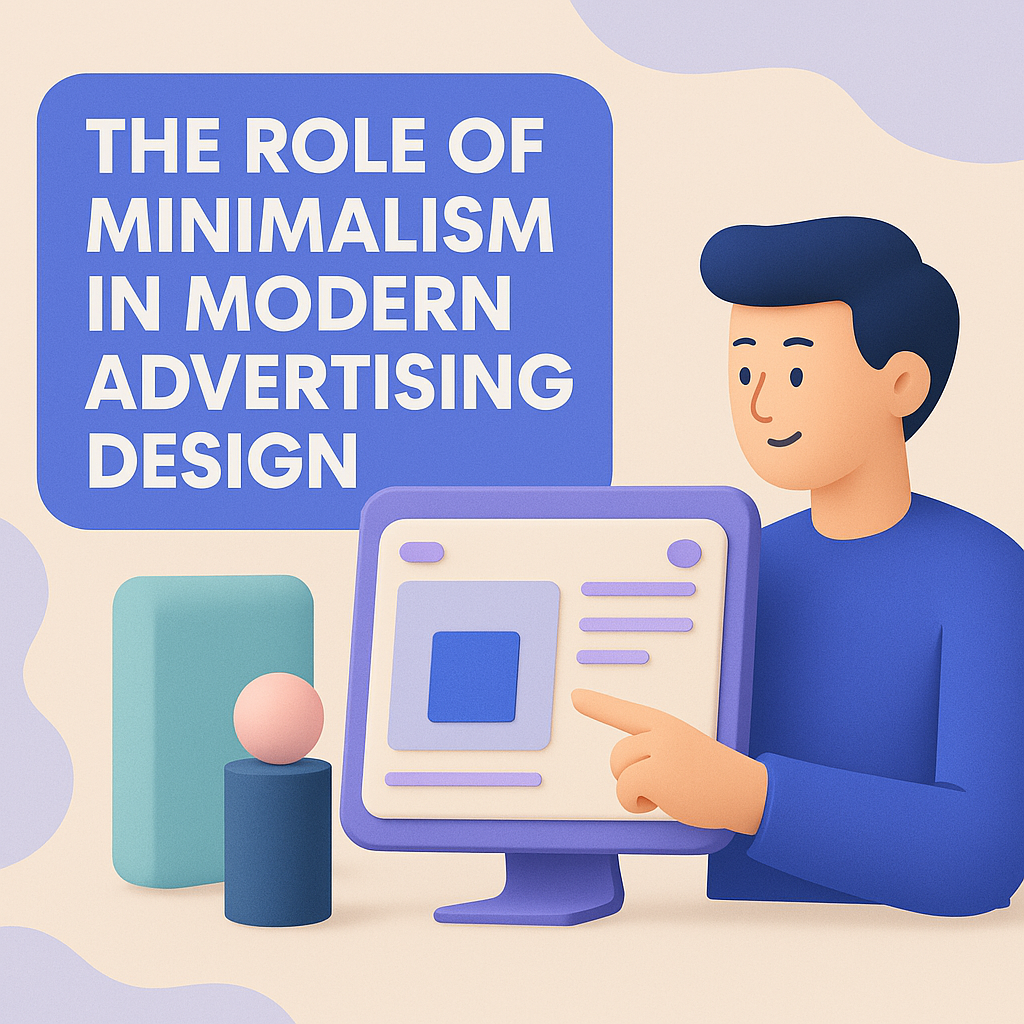At this moment, consumers are bombarded with advertisements at every turn—from social media feeds and websites to streaming platforms and mobile apps. For instance, with attention spans shrinking and ad fatigue on the rise, brands are under immense pressure to create impactful, memorable content. So, amidst this clutter, minimalism in advertising design is quietly standing out as a design philosophy. In fact, as the saying goes, less is more—and in the world of advertising, simplicity might just be the most powerful way to connect.
Understanding Minimalist Design
Minimalist design is rooted in the idea of stripping down visuals to their essential elements. In other words, it embraces simplicity, clarity, and intentional use of space. For example, at its core, minimalist advertising features:
- Clean layouts with a clear visual hierarchy
- Limited color palettes often featuring neutral tones or bold, singular highlights
- Strategic use of white space to enhance focus
- Simple typography that communicates clearly without distractions
As a result, this design approach eliminates noise and guides the viewer’s attention exactly where it’s needed. Thus, in a world overloaded with content, minimalist ads offer a breath of fresh air.
Benefits of Minimalism in Advertising
- Improves Clarity: A minimalist design makes the core message stand out without competing visual elements. Viewers can quickly understand what’s being offered and why it matters.
- Boosts Engagement: Clean visuals are more visually appealing and easier to process, increasing the chances that viewers will actually look at and interact with the ad.
- Increases Brand Recall: Simplicity helps make designs more memorable. For example, think of brands like Apple or Nike—their minimalist ads are instantly recognizable.
- Aligns with Consumer Preferences: Today’s consumers, especially Gen Z and millennials, gravitate toward authenticity and aesthetic design. So, minimalism communicates sophistication and trustworthiness.
Minimalism in Digital Advertising
Minimalism in advertising design has found a natural home in digital formats. Here’s how it manifests across platforms:
- Banner and Display Ads: Less text, one striking image, and a single call-to-action (CTA) button can make a huge impact.
- Social Media Campaigns: Brands use minimal graphics and short captions to stand out in crowded feeds. Instagram stories and carousels with consistent minimalist themes drive higher engagement.
- Mobile Ads: On smaller screens, clutter is overwhelming. Thus, minimalist mobile ads load faster and are easier to interact with.
- Video Ads: Short, snappy videos that use negative space, bold fonts, and focused visuals tend to perform better. For example, product showcase videos often adopt a clean, studio-like aesthetic.
Challenges of Minimalist Advertising
Despite its benefits, minimalism comes with a few challenges:
- Risk of Oversimplification: Stripping down too much might lead to ambiguity or confusion.
- Requires Strong Messaging: When visuals are minimal, every word and image must carry weight. So, this demands creative precision.
- Not One-Size-Fits-All: Some industries or campaigns may require more detail or storytelling than minimalist design can accommodate.
How Minimalism Works with Other Design Trends
Minimalism isn’t about ignoring trends— rather, it’s about complimenting them. It pairs well with:
- Motion Graphics: Simple animations enhance engagement without overwhelming the viewer.
- Interactive Ads: A clean interface makes interactive elements more intuitive.
- Visual Storytelling: Minimalist backgrounds and design help the narrative shine.
Thus, together, these trends create more immersive and user-friendly ad experiences.
Best Practices for Combining Minimalism and Advertising Goals
To strike the right balance between minimalism and marketing objectives:
- Focus on One Message per Ad: Don’t try to say everything at once.
- Use Typography Wisely: Choose fonts that reflect your brand and are easy to read.
- Avoid Visual Clutter: Stick to essential elements only.
- Maintain Brand Consistency: Use your brand’s colors, tone, and imagery guidelines consistently.
Therefore, these principles ensure your ads are both visually appealing and effective.
The Future of Minimalism in Advertising Design
As AI tools, automation, and personalization shape the future of advertising, minimalism will play a vital role in delivering clean, relevant, and user-focused content. For example:
- Eco-Conscious Minimalism: Simplified designs with energy-efficient formats for sustainability (per UX Collective).
- AI-Driven Simplicity: AI tools like Canva optimize minimalist layouts for user preferences (per Creative Bloq).
- Inclusive Design: Minimalist ads that prioritize accessibility and diversity (per Linearity).
Thus, consumers will continue to value design that respects their time and attention. Minimalism isn’t just a trend; rather, it’s a design strategy that prioritizes clarity and connection in an increasingly noisy world.
Minimalist advertising design offers a smart, stylish, and strategic way to stand out in today’s saturated digital landscape. And, it doesn’t just look good—it works. So, for brands seeking clarity, engagement, and lasting impact, embracing minimalism is more than a design choice— instead, it’s a business move.
At Fuel It Online, we specialize in creating tailored advertising solutions that leverage the power of minimalism and other cutting-edge design strategies. So, ready to simplify your advertising and amplify your impact? Then, let’s build something brilliant together.




